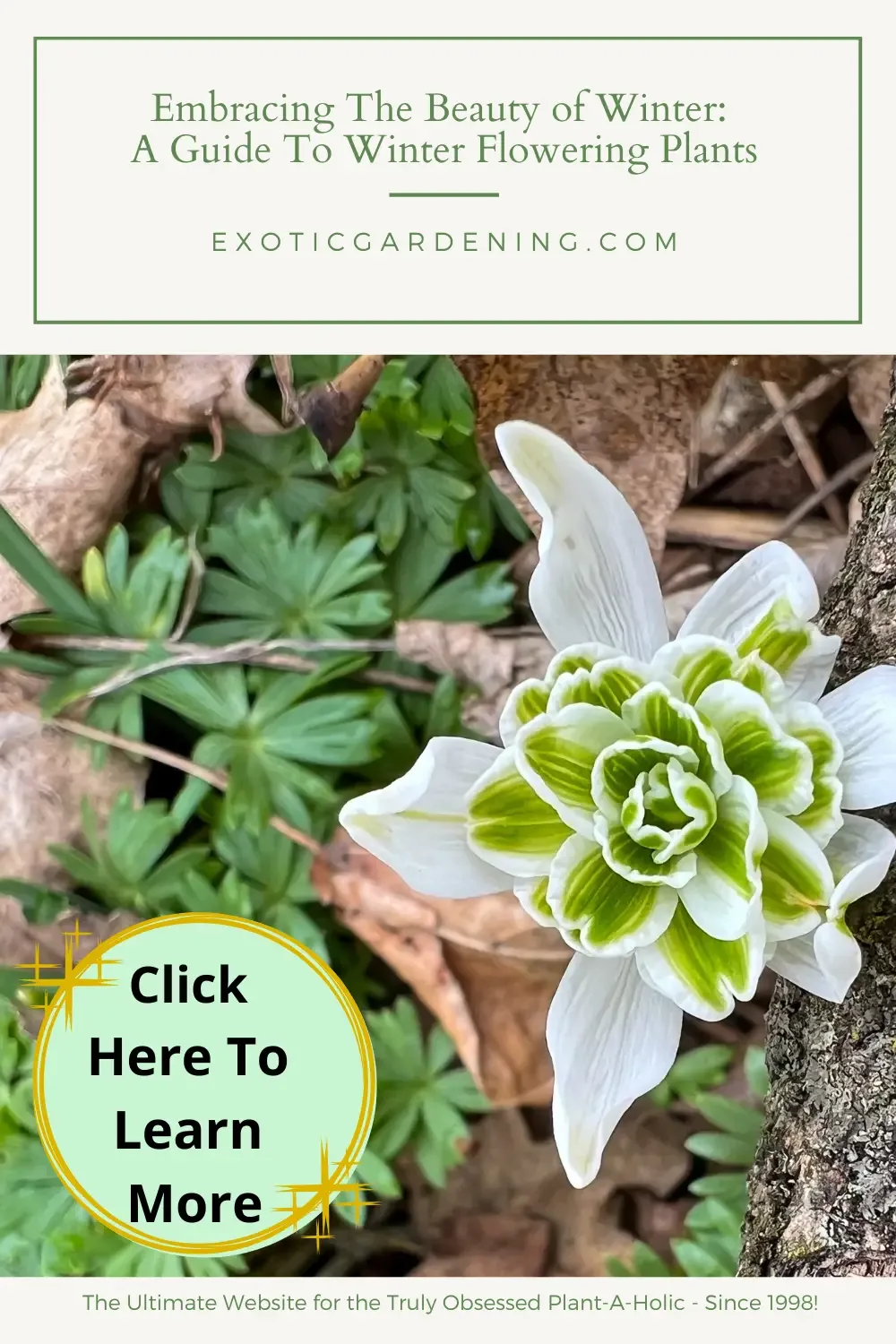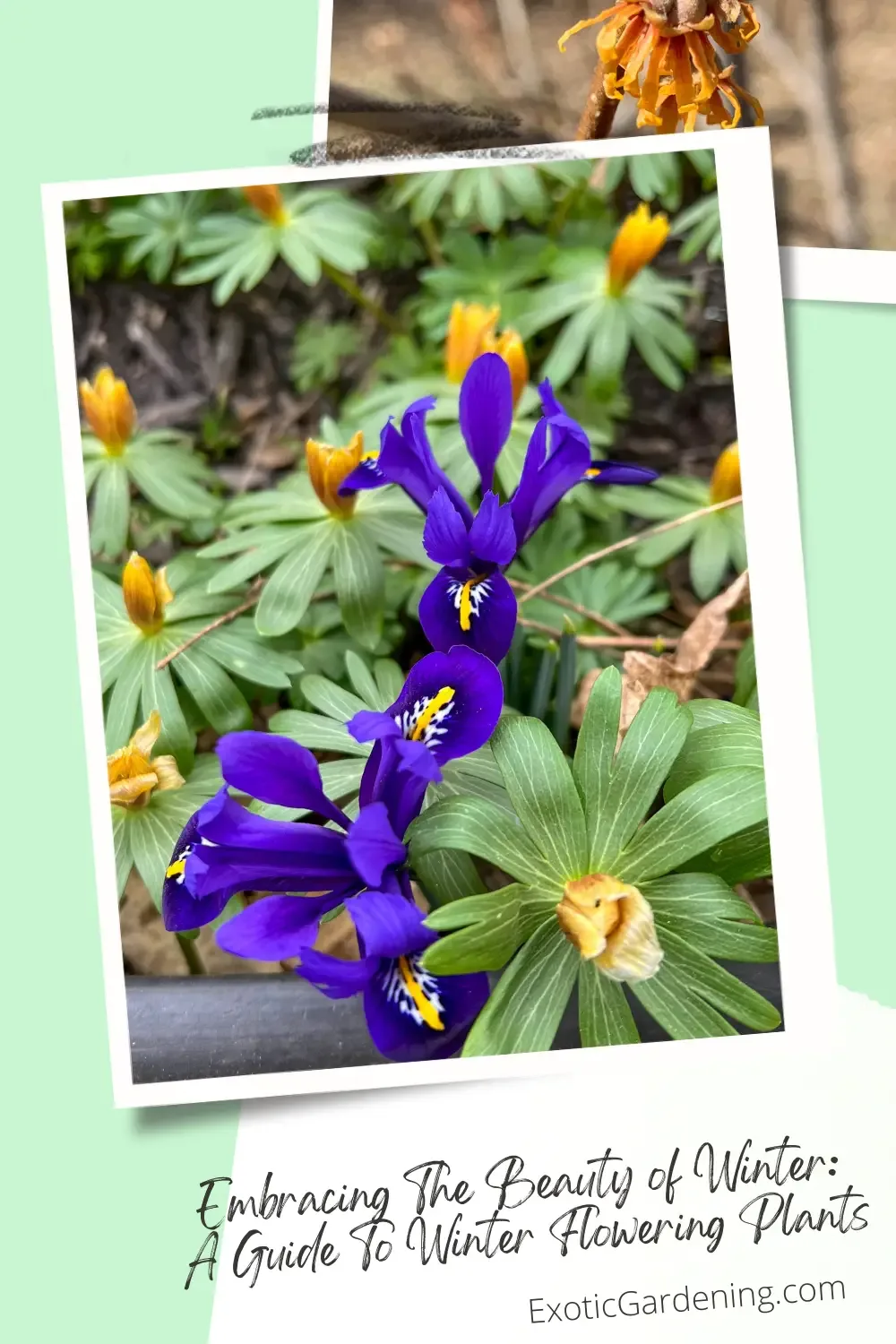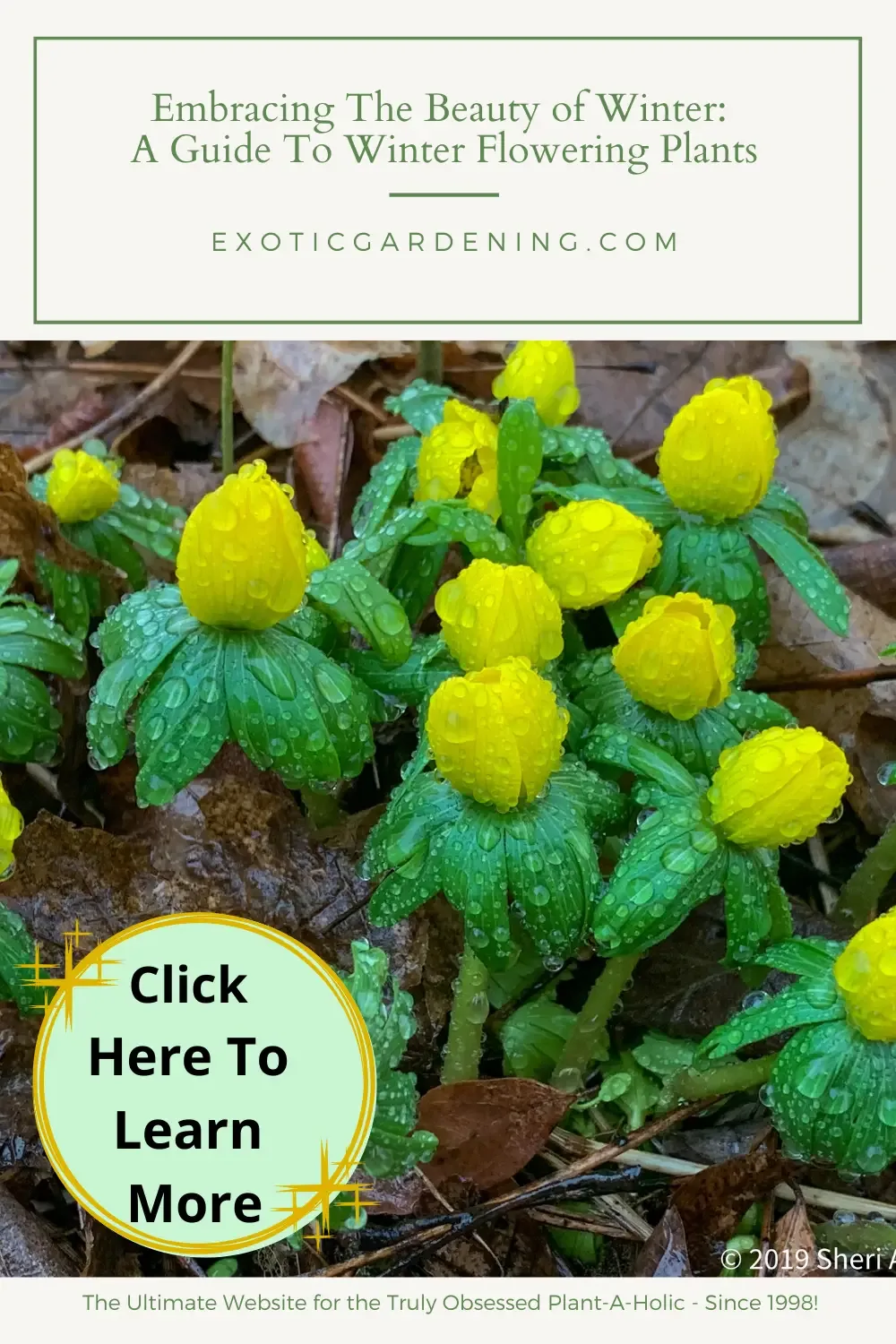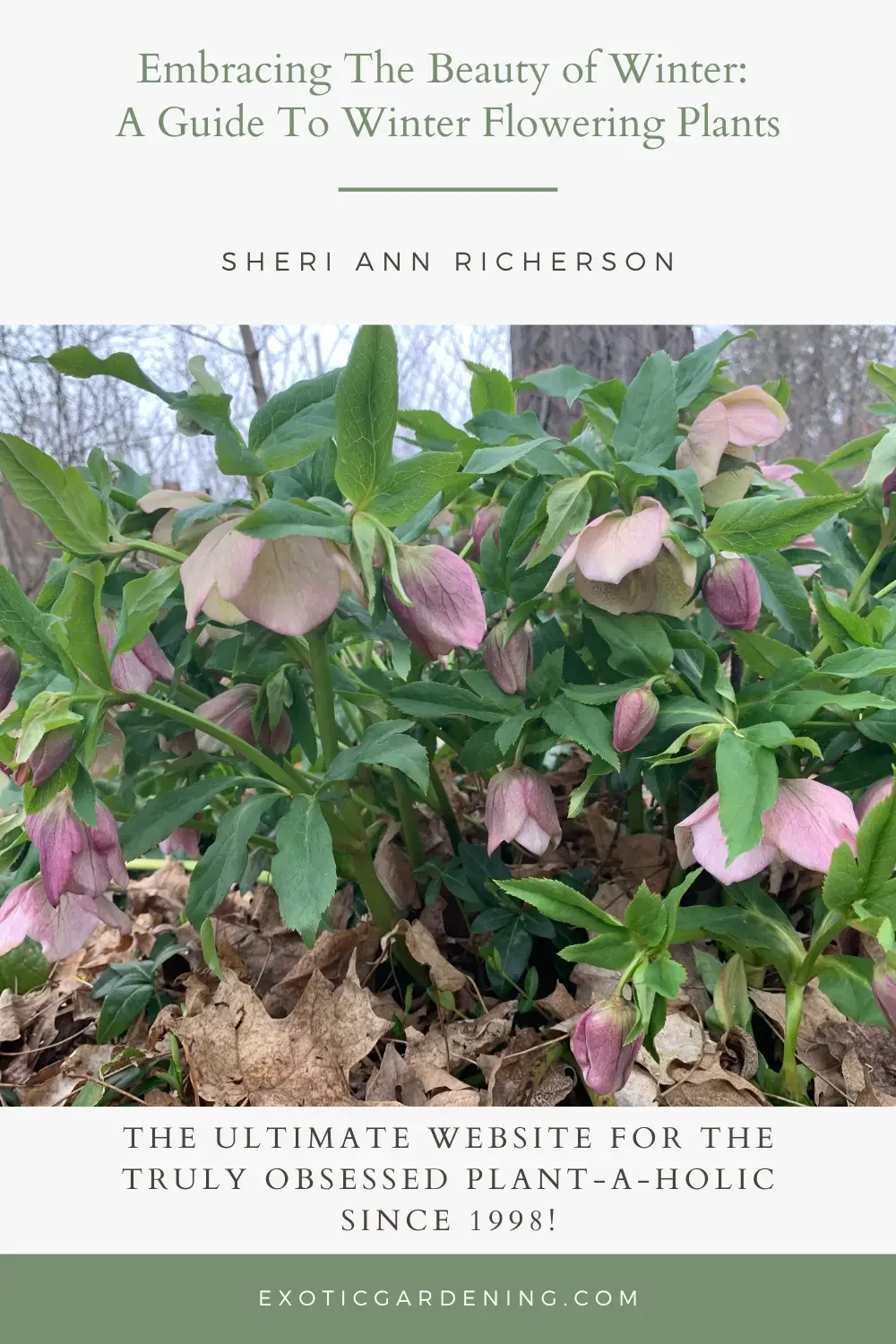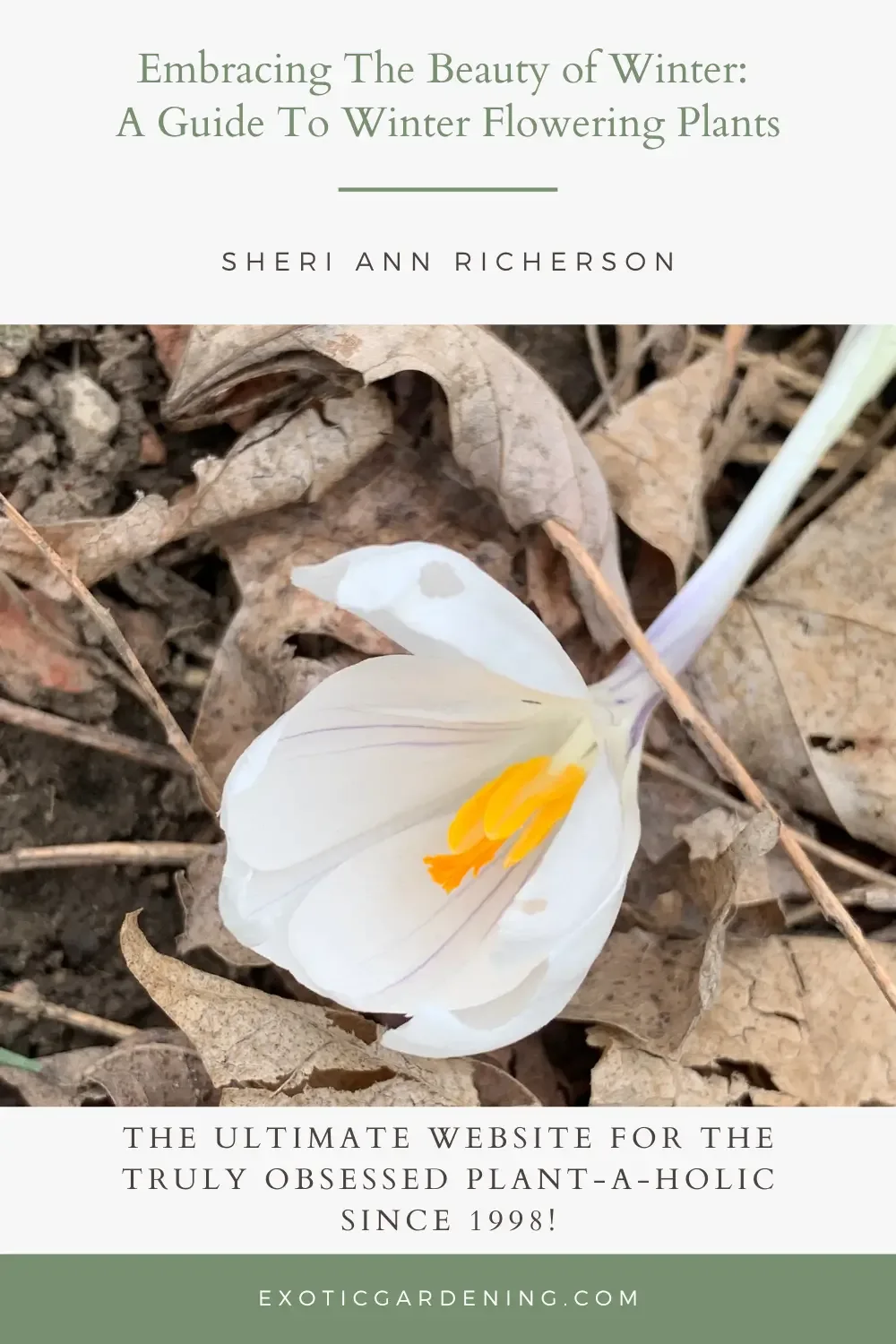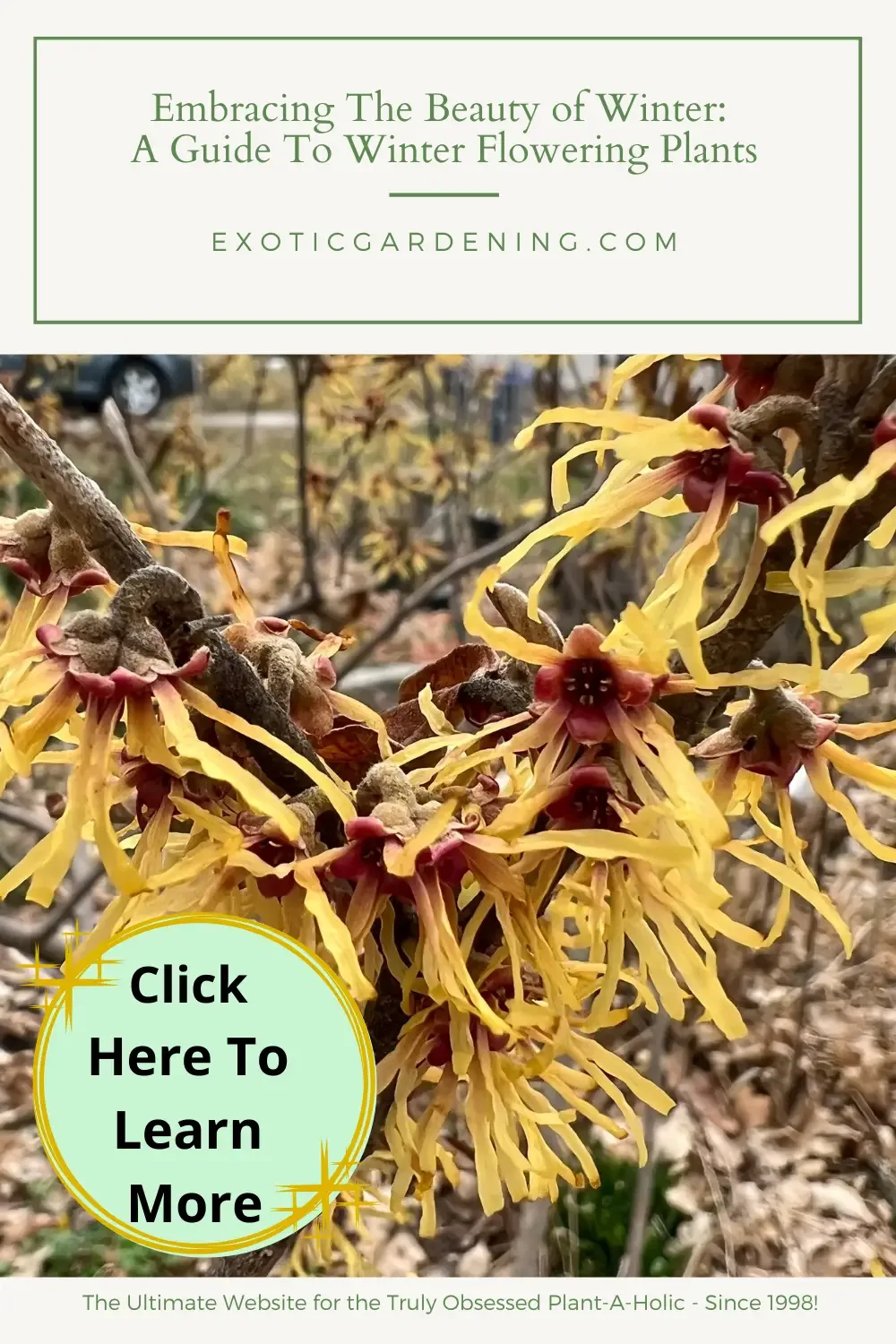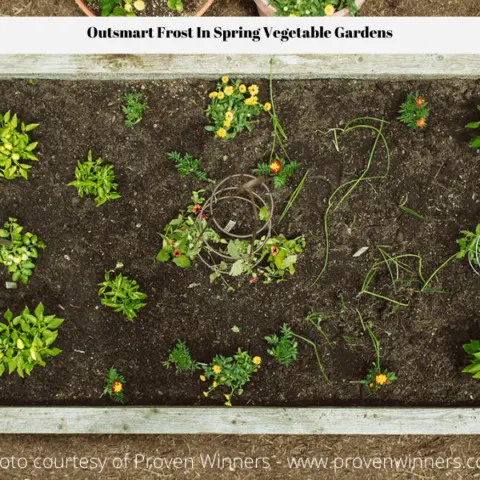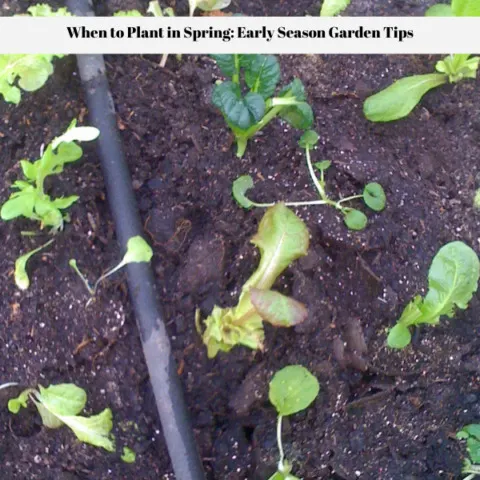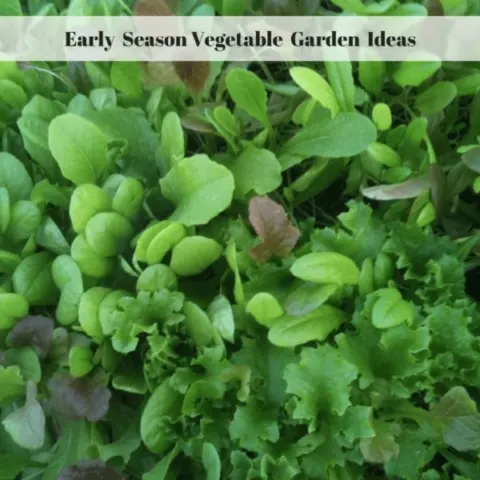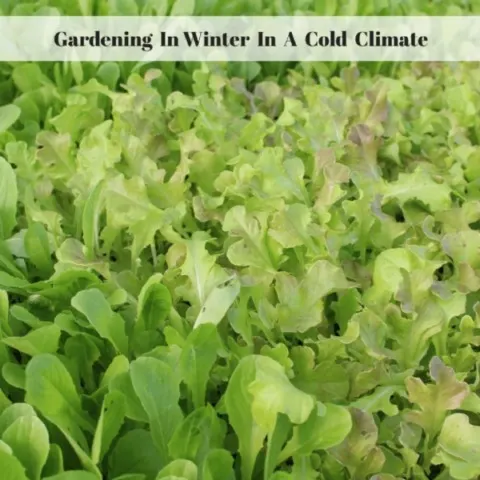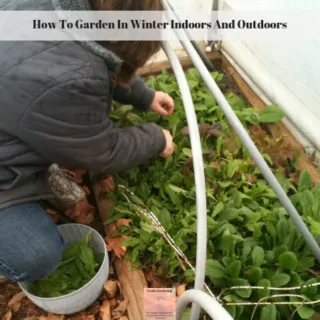Winter may conjure images of barren landscapes, but it's also a time when nature surprises us with the delicate beauty of winter flowering plants.
These resilient blooms defy the cold, offering a touch of vibrancy and hope during the frosty months.
In this comprehensive guide, we'll delve into the enchanting world of winter gardening, where blooms persist even when snow blankets the ground.
There's a unique charm in witnessing colorful petals emerge from the midst of winter's grasp.
Beyond their visual allure, winter flowering plants serve as a lifeline for pollinators, brightening the day for both humans and wildlife.
They transform gardens into sanctuaries of color and fragrance when we need it most.
In the information that follows, we'll explore the art of selecting cold-hardy varieties, share essential tips for winter garden preparation, provide general advice to keep your winter garden thriving, suggest valuable resources for further knowledge, and address common questions in an extended FAQ section.
Let's embark on a journey to embrace the beauty of winter, one bloom at a time.
Top Winter Flowering Plant Choices
In addition to the ever-popular violas, variegated hellebores, and winter aconite, your winter garden can truly shine with an extensive selection of captivating cold-weather blooms.
These remarkable plants defy the cold with their vibrant colors and striking foliage, transforming your outdoor space into a winter wonderland.
Here are some remarkable winter flowering plants to consider:
Camellias: Camellias are genuine winter treasures. These evergreen shrubs or small trees are renowned for their exquisite, rose-like blooms that grace the garden during the winter months. With varieties offering shades of pink, red, and white, camellias add elegance and fragrance to your winter landscape. They typically begin blooming in late fall and continue through the winter months, providing a continuous display of beauty.
Christmas Rose (Helleborus niger): The Christmas Rose is a delightful cousin of the variegated hellebore. Its pristine white blooms and attractive, leathery foliage make it a standout addition to your winter garden. The Christmas Rose often starts blooming in November and continues to charm gardeners with its delicate beauty throughout the winter.
Witch Hazels: Witch hazels, known for their unique spidery blooms, offer a burst of color and fragrance to the winter garden. While the autumn embers witch hazel and Arnold’s Promise are popular choices, consider the native witch hazel (Hamamelis virginiana) for its delicate, sweetly scented flowers that emerge in late fall. These fragrant blooms add a touch of nostalgia to the winter landscape, as they’ve been cherished for centuries.
Snowdrops: Snowdrops (Galanthus) are one of the earliest heralds of spring, often appearing as early as January. Their dainty, bell-shaped white flowers with green markings emerge from the snow, offering a glimpse of hope and renewal.
Winter Jasmine (Jasminum nudiflorum): With bright yellow, star-shaped flowers, winter jasmine is a true winter gem. This vining shrub adds a cheerful touch to your garden during the colder months.
Cyclamen: Cyclamen blooms in shades of pink, red, and white, providing a pop of color in the winter garden. Their uniquely shaped flowers and marbled foliage make them stand out.
Daphne: Daphne's fragrant blooms are a true delight during winter. The sweet scent of varieties like Daphne odora can perfume the garden on milder days.
Winter Heath and Heathers: These low-growing evergreen plants produce tiny, bell-shaped flowers in various colors, providing much-needed winter nectar for early bees and other pollinators.
Edgeworthia: Edgeworthia, also known as paperbush, offers fragrant, spherical clusters of small flowers in late winter. Their texture and scent make them a captivating addition to the winter garden.
Mahonia: Mahonia, or Oregon grape, boasts clusters of bright yellow flowers on spiky stems during the winter. They are followed by striking blue-black berries that attract birds.
Crocus: Crocuses are among the first spring flowers to appear, often emerging through the snow. Their cup-shaped blooms in shades of purple, yellow, and white are a cheerful sight.
These winter flowering plants ensure that your garden remains a source of joy and beauty even in the chilliest months of the year.
Explore these options to create a winter garden that defies the cold and brings warmth to your outdoor space.
Tips for Choosing Winter Plants
When selecting plants for your winter garden, it's essential to consider factors beyond cold-hardiness.
Here are some tips to guide your choices:
1. Sunlight Exposure: Pay attention to the sunlight exposure in your garden. Some winter plants, like camellias, prefer partial shade, while others, like witch hazels, thrive in full sun. Make sure your selections align with the available light conditions.
2. Soil Quality: Soil quality plays a vital role in plant health. Most winter flowering plants, including camellias, appreciate well-drained soil. Enhance your soil with organic matter to improve its structure and water retention capabilities.
3. Watering Needs: Different winter plants have varying water requirements. While camellias and hellebores prefer slightly moist soil, native witch hazel and winter aconite can tolerate drier conditions. Tailor your watering schedule to meet the specific needs of each plant to avoid issues like root rot or drought stress.
4. Wildlife Appeal: Consider the wildlife in your area when selecting plants. Some winter flowers, like winter aconite, provide essential nectar sources for pollinators. Creating a garden that attracts and supports wildlife can enhance your winter gardening experience.
In conclusion, selecting cold-hardy varieties for your winter garden is the first step towards creating a vibrant and resilient outdoor space during the colder months.
With careful consideration of factors like sunlight, soil, and wildlife appeal, you can curate a garden that not only survives but thrives in winter's embrace, offering beauty and solace during the season's chill.
Winter Garden Preparation With A Checklist
Cleaning and Pruning Before winter's chill sets in, tidy up your garden. Remove spent annuals and trim back perennial plants that have finished their season, including the Christmas Rose and native witch hazel. Prune away dead or diseased branches to encourage healthy growth.
Soil Preparation Preparing your soil is key. Winter aconite, camellias, and hellebores prefer well-drained soil. Enhance it with organic matter and a layer of mulch to insulate plant roots, aiding moisture retention and temperature stability.
Protecting Plants from Frost and Cold Shield your plants from frost and cold temperatures. Use frost blankets or cloches for delicate winter aconite blooms and early-blooming hellebores. Consider windbreaks for protecting camellias, native witch hazel, and Arnold's Promise.
Watering and Monitoring Monitor soil moisture diligently during winter. While camellias and hellebores prefer slightly moist soil, don't overwater. Native witch hazel and Arnold's Promise can tolerate drier conditions. Adjust your watering schedule to avoid root issues.
General Winter Gardening Tips
Care And Maintenance Of Winter Blooming Plants
Winter isn't a time for neglect; it's a season of careful stewardship for your garden's treasures.
As you nurture your winter-flowering plants, including camellias, Christmas Rose, witch hazels, and the extended list of winter blooms such as snowdrops, winter jasmine, cyclamen, daphne, winter heath, heathers, edgeworthia, mahonia, and crocus, consider these essential care and maintenance tasks:
- Deadheading Faded Blooms: Remove spent blooms promptly to encourage continuous flowering. This practice redirects the plant's energy into producing new blossoms.
- Disease Vigilance: Regularly inspect your plants for signs of disease, particularly fungal infections common during moist winter months. Treat any issues promptly to protect the overall health of your garden.
- Pruning: Prune winter-damaged branches cautiously, ensuring you follow proper pruning guidelines for each plant species. This will aid in maintaining their health and shape.
Wildlife Considerations
Winter gardens can become havens for wildlife during the colder months.
Embrace the natural world by creating a garden that invites and supports various creatures.
Here are some considerations to foster a harmonious relationship between your garden and wildlife:
- Nectar-rich Flowers: Besides camellias and winter aconite, select winter blooms like snowdrops and crocus that provide nectar and sustenance for pollinators, including bees and butterflies, even on milder winter days.
- Bird Feeders and Houses: Install bird feeders filled with seeds and suet to attract a variety of feathered friends. Birdhouses provide shelter for birds during the winter, as well as cozy nesting spots for the upcoming spring.
- Habitat for Beneficial Insects: Overwintering insects and beneficial organisms play a vital role in garden ecosystems. Maintain areas with leaf litter or brush piles to create habitats for these essential garden allies.
Recommended Resources For Winter Flowering Plants
To deepen your knowledge and enhance your winter gardening success, explore these valuable resources:
- Books: "The Winter Garden" by Val Bourne offers profound insights into winter gardening techniques, plant choices, and inspirational ideas.
- Websites: The USDA's Plant Hardiness Zone map is an invaluable tool for determining your local hardiness zone. Additionally, browse gardening websites and participate in forums to access community advice and discover a wealth of plant recommendations from experienced gardeners.
- Local Garden Centers: Don't underestimate the wisdom found at your local garden center. Seek guidance from their experts to select winter plants tailored to your region's specific conditions and challenges.
Frequently Asked Questions (FAQ)
Q: When is the best time to plant winter flowering camellias?
A: The ideal time to plant winter flowering camellias is in the fall or early spring when the soil is workable and temperatures are milder. This allows them to establish their roots before the full force of winter.
Q: Can you explain the difference between Christmas Rose and regular hellebores?
A: Certainly! Christmas Rose (Helleborus niger) is a specific species of hellebore known for its white, early winter blooms. Regular hellebores encompass various species and hybrids that typically bloom from late winter to early spring, displaying a wide range of colors, including shades of pink, purple, and green.
Q: Are there any special care requirements for Christmas Rose during the winter?
A: Christmas Roses are generally hardy, but it's wise to provide them with a layer of mulch to protect their roots during freezing temperatures. Remove any heavy snow accumulation from the plants to prevent damage. Also adding a little bit of horticultural lime around the base of the plant and working it into the soil is something this particular variety really appreciates.
Q: Are there any winter flowering plants that are deer-resistant?
A: While no plant is entirely deer-proof, some winter flowering plants, such as camellias and certain hellebores, are less appealing to deer due to the presence of toxic compounds in their leaves and flowers. To further protect your garden, consider implementing deer deterrent methods like fencing or repellents.
Q: How can I protect my winter garden from wildlife, such as deer and rabbits?
A: To deter wildlife, consider using fencing or natural deterrents like scent repellents. Additionally, select plants that are less appealing to these animals, as some winter flowers are less attractive to wildlife.
Q: Can camellias thrive in containers on a patio during the winter months?
A: Yes, camellias can thrive in containers. Ensure that the containers have proper drainage to prevent waterlogging, and protect them from harsh winter winds that can cause drying and damage. During extreme cold spells, consider moving container-grown camellias to a sheltered area for added protection.
Q: Are snowdrops safe to plant near other winter blooms?
A: Yes, snowdrops are generally safe to plant near other winter blooms. They are not aggressive competitors and will coexist peacefully with other plants in your winter garden.
Q: How do I protect my winter garden from frost and freezing temperatures?
A: To safeguard your winter garden, use frost blankets or cloches for delicate blooms and provide windbreaks for shrubs and trees. Mulch can also insulate plant roots, helping to prevent frost damage.
Q: What is the best way to water my winter garden during cold weather?
A: Adjust your watering schedule to the specific needs of your plants. While some plants like camellias prefer slightly moist soil, others like native witch hazel can tolerate drier conditions. Water when the soil is dry to the touch, but avoid overwatering, as this can lead to root problems in cold weather.
Q: How can I encourage early spring growth in my winter-flowering plants?
A: To encourage early spring growth, consider starting seeds indoors for some winter plants, including snowdrops and hellebores. Transplant them into your garden in early spring for a head start on the growing season.
Q: Can I use compost or mulch in my winter garden, and when is the best time to apply them?
A: Yes, you can use compost and mulch in your winter garden. Apply a layer of mulch in late fall to insulate plant roots and conserve moisture. Compost can be added to improve soil quality during the fall or early spring.
Q: What should I do if I notice pests in my winter garden?
A: If you observe pests in your winter garden, take action promptly. Consider using organic pest control methods or insecticidal soaps to mitigate the issue while preserving the health of your plants. Regular inspection is key to early pest detection.
Q: Can I plant winter flowering viola seeds directly in the ground in late fall?
A: While violas are cold-hardy, it's often recommended to start viola seeds indoors in late summer or early fall and transplant them into the garden in early spring for the best results.
Additional Resources And References
To further enrich your winter gardening journey, explore these valuable resources:
- Books:
- Websites and Forums:
- USDA's Plant Hardiness Zone Map: www.usda.gov
- Gardening forums and websites for community advice and plant recommendations.
- Local Garden Centers: Reach out to your local experts for hands-on guidance and plant selection tailored to your region's unique conditions.
Embark on Your Winter Gardening Journey
In the quietude of winter, when the world seems to sleep under its snowy blanket, the garden can still come alive with the magic of winter flowering plants.
We've explored the art of selecting cold-hardy varieties, learned how to prepare our gardens for the winter bloom, and discovered the joys of nurturing our winter gardens, attracting wildlife, and fostering a harmonious ecosystem.
As we conclude this journey through the realm of winter gardening, let's reflect on the essence of this pursuit.
Winter flowering plants, from the delicate snowdrops to the elegant camellias, bring color, fragrance, and life to the coldest season.
They serve as a reminder that beauty can thrive even in adversity.
Now, it's your turn.
Armed with the insights shared in this article, the extended FAQ section, and a treasure trove of resources, consider starting your own winter garden.
Embrace the serene beauty of winter, create a sanctuary for wildlife, and watch your garden come alive with blooms that defy the cold.
Your winter garden awaits, a testament to the enduring power of nature's wonders.
The Backside Of The Gardening Calendar
Use Frost To Your Advantage
Did you know that there is a way to use frost to your advantage in the garden in both spring and fall? Read on to learn more.
Outsmart Frost in Spring Vegetable Gardens
Understanding how to outsmart frost in spring vegetable gardens leads to earlier harvests, less plant damage and a longer growing season.
When to Plant in Spring: Early Season Garden Tips
Know when to plant in spring by using these early garden season tips. These tips will allow you to get a head start on your vegetable garden.
Jump Start The Spring Garden With Winter Sown Vegetables
Get a jump start on the spring garden with winter sown vegetables. Once you know how to do this, its easy to grow vegetables year round.
Vegetable Garden Frost Protection: Extending Your Winter Gardening Season
Discover essential tips and techniques for vegetable garden frost protection. Extend your winter gardening season with our guide.
Gardening In Cold Climates In Early January
Gardening in cold climates in January without supplemental heat is possible. The seeds, plants and garden structure is what matters.
Vegetables to Plant in January: Garden Tips for Year-Round Growing
There are a number of vegetables to plant in January as well as some flowering plants. Indoors or out, find out dates to start in Indiana.
The Best Vegetables To Plant In February
There are a number of cool season vegetables to plant in February directly in the garden even if you live in a cold climate.
How To Garden In Winter Indoors And Outdoors
Learn how to garden in winter indoors and outdoors. There are many vegetables and herbs that don't mind the cold or thrive in containers.
Save Money! Harvest Free Vegetables Year-Round In Any Climate!
Yes, you can harvest vegetables year-round, even if you live in a cold climate by planting at the right time and gardening under cover.
September Is Here But Don't Quit Gardening Now!
September is here but there is no need to quit gardening. Plant those cool weather crops from seed or transfer plants into the garden.
Monkshood Flowers For The Fall
There are some late blooming flowers for the fall season such as monkshood. Autumn monkshood is known to bloom from September to November!

